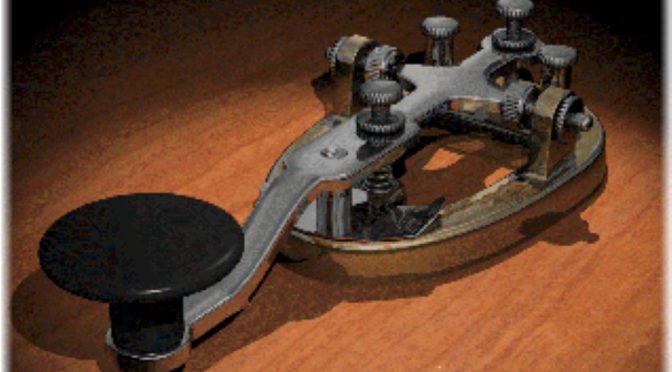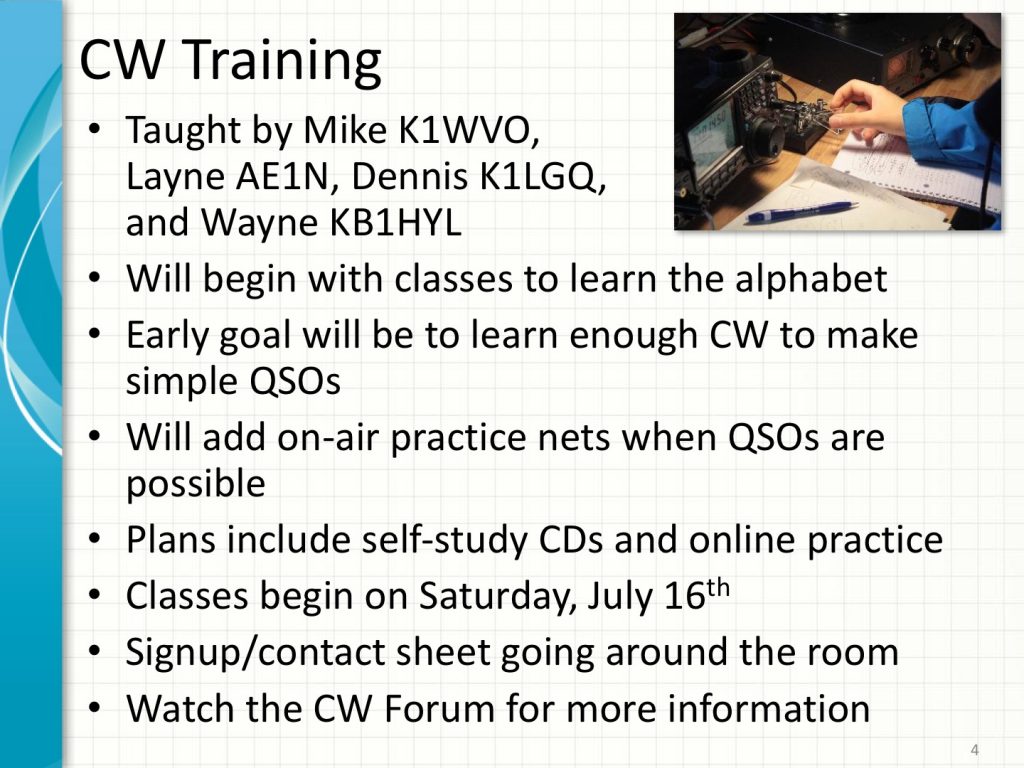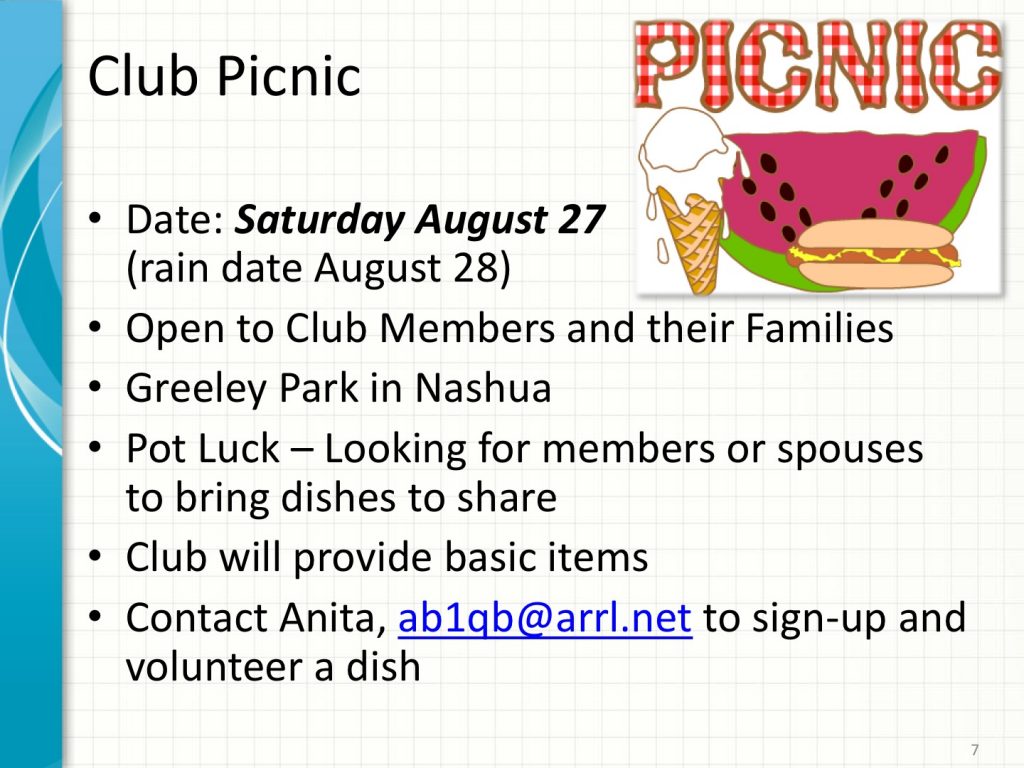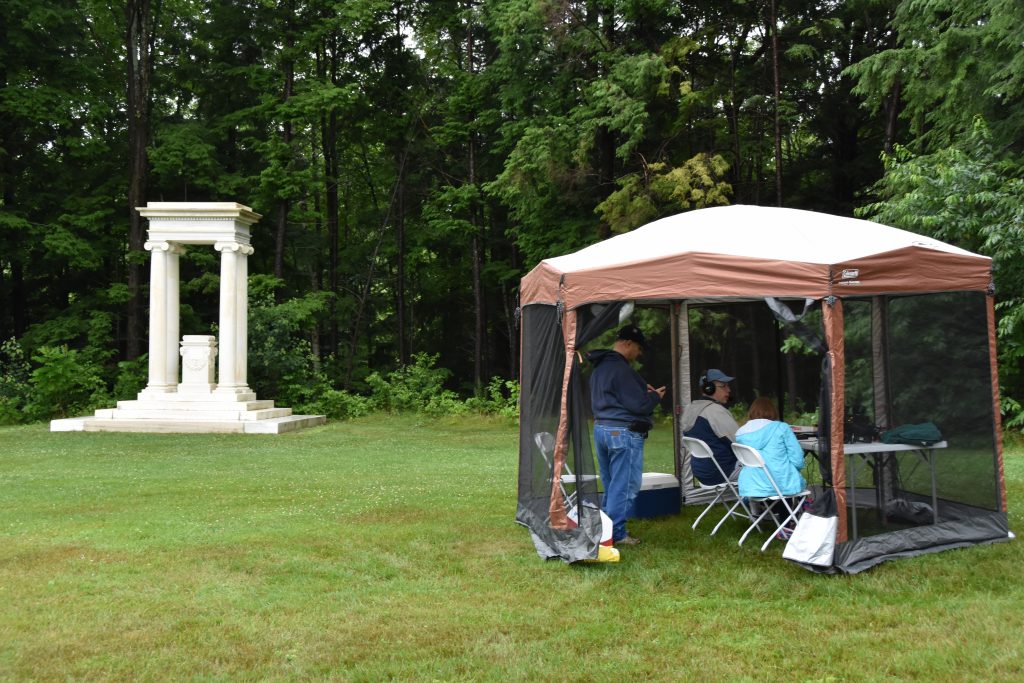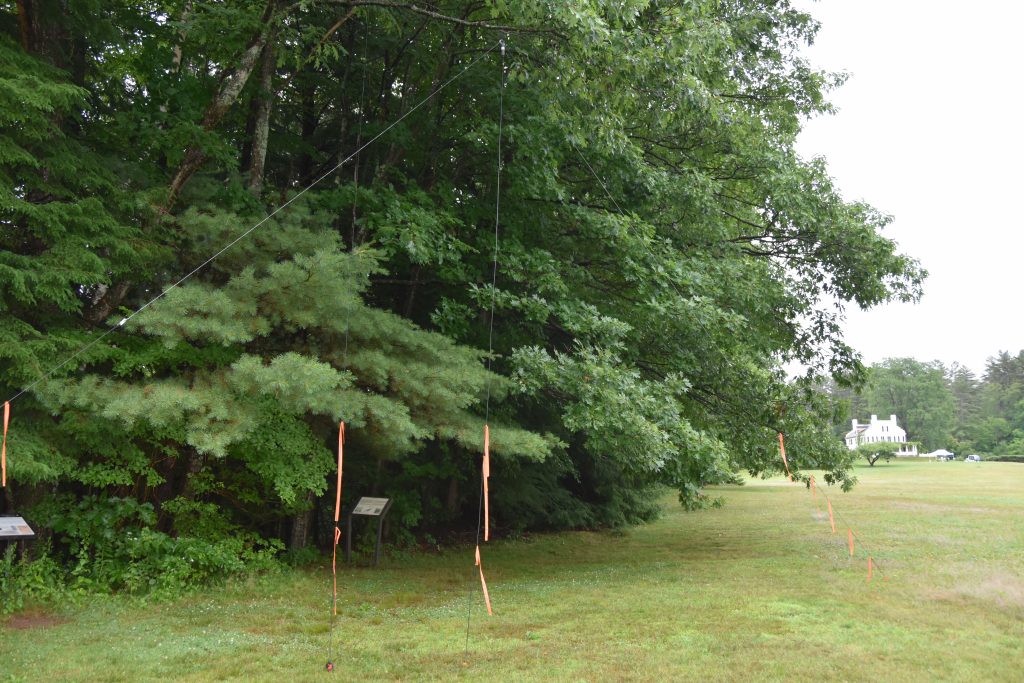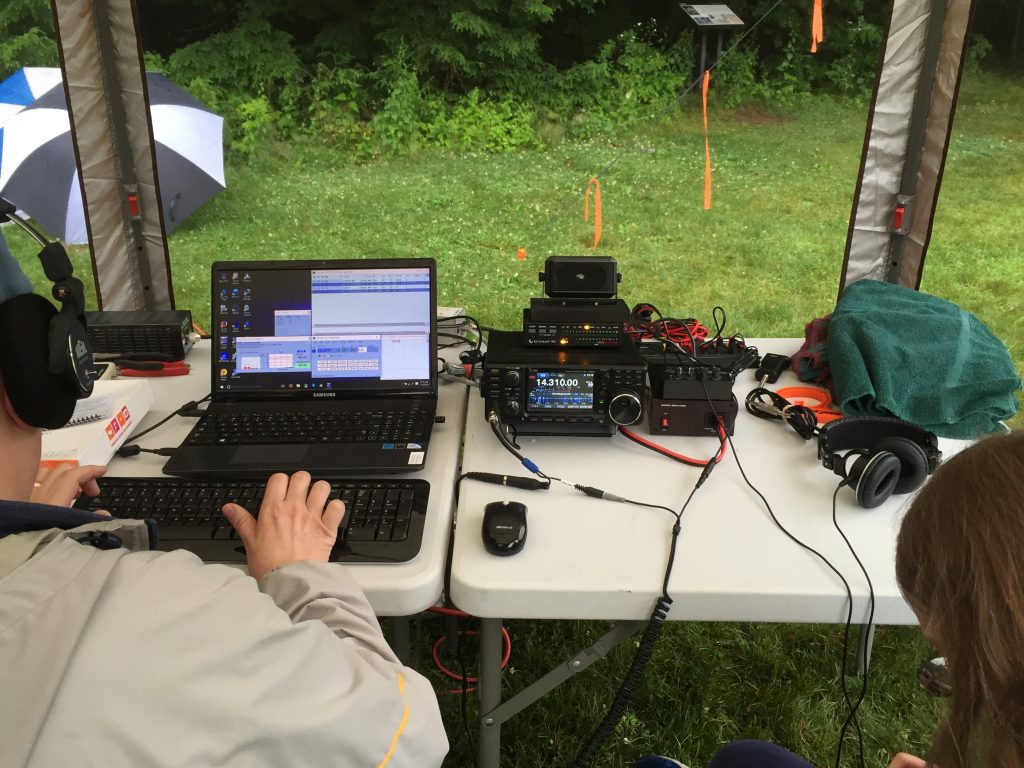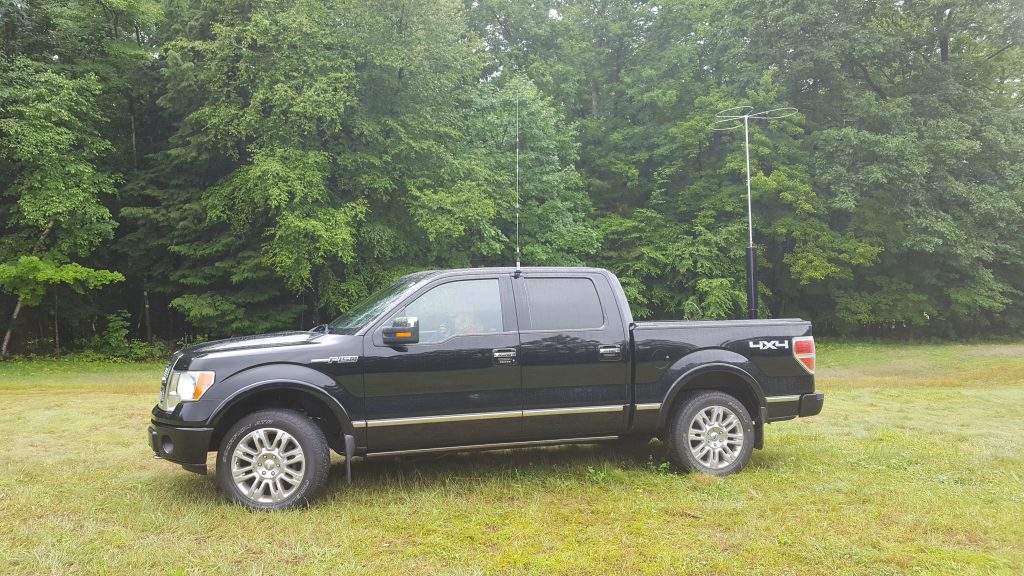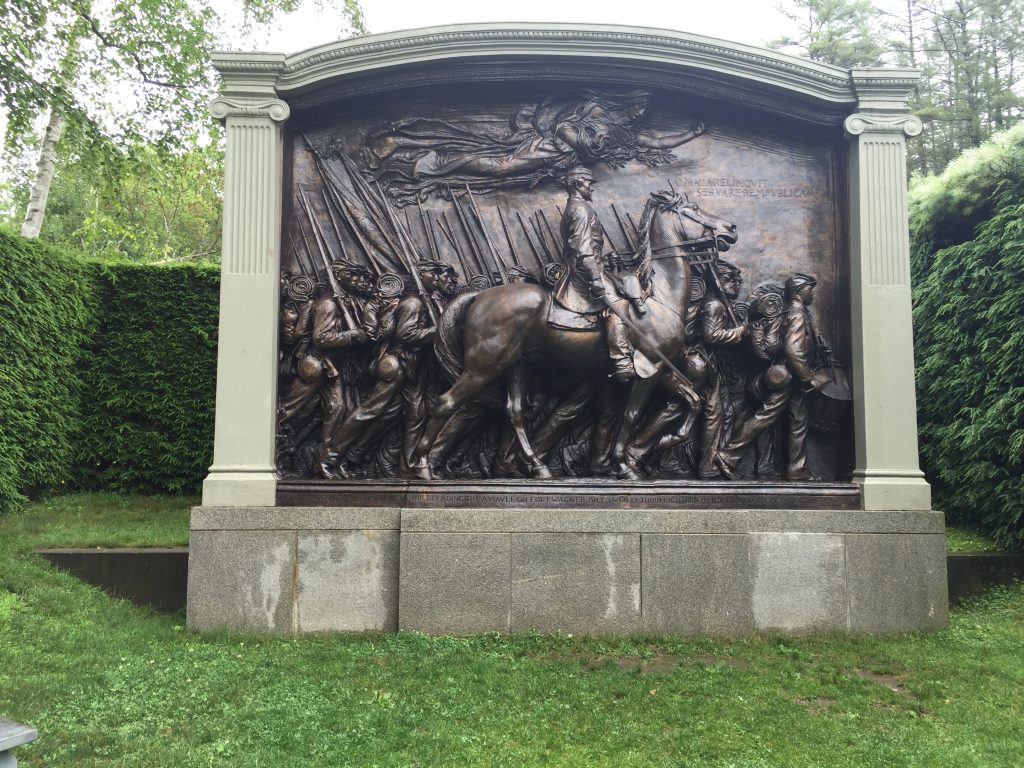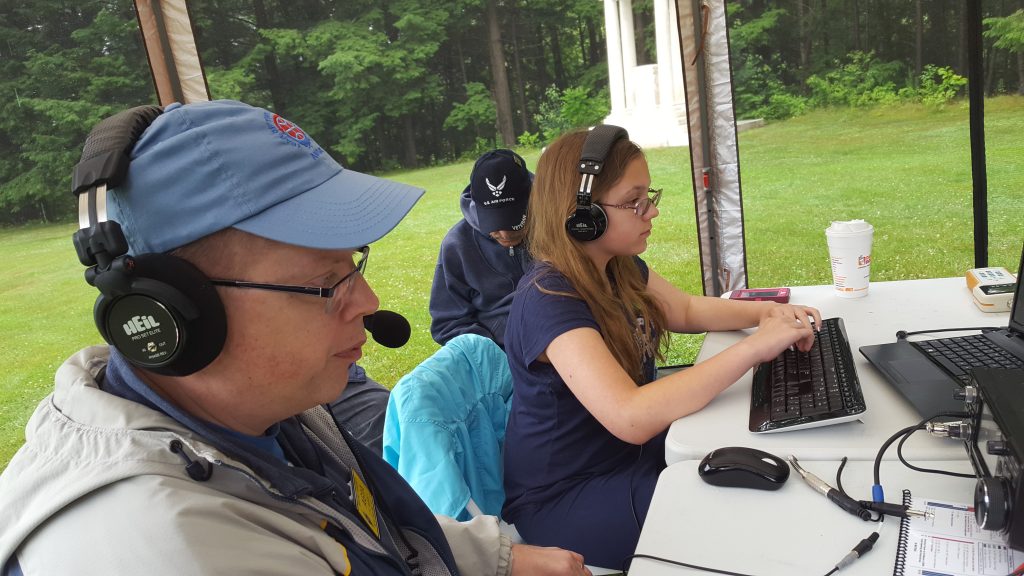I have been contributing articles to the Nashua Area Radio Club bulletin for almost 30 years, having started a contest column on a suggestion during a board meeting back in the late 80s. I evolved from simply reporting on upcoming contests to my impressions on operating (DXpeditions, pile-up strategies, etc.); new modes (RTTY, PSK, JT-65); and the trials and tribulations of maintaining a station (antenna repair, rotor repair, amplifier repair, rig upgrades, application debugging, etc.). Long ago I adopted a tongue-in-cheek, self-deprecating style to (1) remind myself that it is only a hobby; (2) that I’m not the genius I always thought I was after high school; and (3) know that Murphy is always there. The intent has been to help you relate to ham radio no matter where you are in the game, from a new novice to a seasoned old-timer with 50+ years on the air.
The month of August usually means it is time to get ready for the upcoming fall and winter season of major contests and the return of DX for me. However, here in Florida, it means waiting until sometime in September when it is just hot to tackle antenna projects. While pondering what to write about for this month, I decided to take a detour from my usual lighthearted musings and reflect on a few Silent Keys who have significantly influenced my ham life. Many of you are new to the club and may not know these individuals.
Mike Bernock, N1IW. I met Mike about 20 years ago while researching a project at work. I needed some information on one of the tactical radios used by the Air Force and was told to go see Mike. Mike and I chatted for a while about the capabilities of the radios and drifted to our personal experiences with radios, at which point he smiled and told me his call. He had not been licensed too long but was really enjoying the hobby. He also had a cool job getting to delve into the technology of the military radios. (Why I ended up with a career in radar and data format technology instead of radio applications I’ll never know.)
Not long after our meeting, Mike and I met again as part of a team at K0TV for one of the big contests. Mike was firmly hooked on contesting at this point and reveled in beating out other “big gun” stations when “new meat” showed up during a contest. It didn’t take Mike long to put up a tower and build a station at his QTH. (Being a bachelor, he was spared the usual justification battle when it came to his ham radio toys.)
Mike also excelled at finding a better way of doing things. When he had problems with the truss supports on a 40-meter beam he had bought, he redesigned the fasteners to eliminate sharp bends in the support cables that caused the cables to break and the elements to droop. He notified the manufacturer of the fix but was told that would add about $20 to the cost of the beam and his idea was declined. His inventiveness lived on, however, when it came to removing a beam from a tower for maintenance. When I needed to pull my beams off for some work, it was suggested that I used a special device that Mike built to lower a beam on a tram line. His device secured the beam so that the elements would not “porpoise” while being lowered. The simple jig was dubbed the Bernock Antenna Removal/Replacement Fixture – BARRF.
Mike was also involved in the build up to hosting the World Radiosport Team Championship (WRTC) that the Yankee Clipper Contest Club volunteered to set up. He was one of the coordinators for site management to make sure things would go smoothly for the contestants. Sadly, Mike would not live to see all his work pay off. Toward the end of 2013, Mike became ill and was diagnosed with cancer. I spoke to him in late in February 2014 as he was awaiting bone marrow harvesting. Less than 48 hours later, he became a Silent Key. As a tribute to Mike during the ARRL SSB DX contest a couple weeks later, members of YCCC exchanged a greeting of “Irish Whiskey” – Mike’s phonetics – when working other members on the DX end during the contest.
Jerry Muller, K0TV. I knew Jerry for perhaps 20 years if not more. He burst onto the public scene back in the 90s as he was building his contest station. Jerry had purchased a large house on a hilltop with six acres of land – a contester’s dream. He set about erecting three towers, arranged so that he could feed them on 160 meters for gain in several directions. Unfortunately, a neighbor in the development below him took offense to the unsightly towers and vowed to fight his plans.
She picked the wrong guy for a fight. Those of us who knew Jerry can describe him as irascible, irreverent, undaunted and similar adjectives that are not printable. Jerry was an avid VHF/UHF contester as well as an EME enthusiast. This meant that he understood the technical requirements of a line-of-sight path and antenna height go hand in glove. With the aid of Mike, K1TWF, and PRB-1, Jerry successfully argued his case in court. (Years later, while working on one of his towers, I remarked that a large pine tree was close to one of his guy wires. He hollered up asking if I could see the house of his tormentor. When I said no, he said that is why the tree is there.)
In the ensuing years, I operated the major contests from Jerry’s QTH. I enjoyed knocking off the DX with ease, especially with his 80-meter 4-square that we put up in a steady November rain. Jerry’s shack which occupied most of the basement rooms of his house would do a hoarder proud. It is a tribute that he knew exactly where everything was. The downside is that it meant he had to be on call during a contest weekend whenever we needed something.
Although he was a senior software engineer by profession, Jerry had a strong feel for the hardware side having designed and built interfaces for his VHF/UHF work. I got to learn the annoying side of his efforts while installing one of many VHF/UHF beams on one of his towers. To this day, a piece of me, literally, is still on the top of that tower. On the lighter side, Jerry designed a simple jig for aligning the WRTC towers and anchors that proved to be a big time saver. As one of the site installation team leads, I was grateful for the “Jerry-rigged” apparatus.
Jerry was noticeably absent from a memorial dinner for Mike, N1IW. When I met him at the post-WRTC celebration dinner, he did not look well. It was then that I learned he had been diagnosed with pancreatitis. Jerry was diabetic and, true to his nature, often flouted his doctor’s advice. For the next year, Jerry and his team at Mass General battled the disease in preparation for major surgery. I saw Jerry in July 2015 shortly before we moved. He had gone from weighing 270 pounds to 165, less than what I weigh. His mind – and mouth – however, were still sharp as ever but the tumor was as stubborn as he was, refusing to shrink. Perhaps fittingly, Jerry became a Silent Key on October 25, 2015, during his beloved CQ WW SSB DX contest.
Rex Lint, K1HI. I met Rex not long after moving to NH and joining NARC. First impressions are that Rex was an easy-going guy with a great sense of humor. He was already known as an avid contester in a club that did not focus on contesting. This made Rex the de facto favorite to operate 20 meters during Field Day where the most contacts could be made. Rex knew how to make operating relaxing and fun. He often Elmered new operators on how to work stations in a contest, usually making a humorous remark during a run to lighten the tension. During one Field Day when the club operated battery, Rex decided to stir up some QSOs while operating 20 SSB. He cranked his power up to 100 watts, used his call, and asked the stations to “LISTEN FOR THE QRP STATION”, at which point he would drop his power to 5 watts and work the stations with the club’s call.
Ever one looking for the contest advantage, Rex pressed to add more aluminum during Field Day. When the club ramped up Field Day activities at a field in Hollis, Rex convinced the club to get to 100 feet on one tower and stack beams for 20 and 40 meters. He was rewarded with adding DX stations off the back of the beams. (The project ended up to be the most exhausting climbing I have ever done. I also found how fast I could climb down as a thunderstorm approached.)
Rex taught me how to climb towers and trust my belt. My first time climbing with Rex was to take down a tower in Hudson. I had never climbed more than ten feet above the roof line of a tower mounted to the side of my house when I lived in NJ. Here I was, strapped in at 70 feet, with Rex telling me how he got over his fear of climbing. He would climb up to where he felt scared and nauseous, climb down, throw up, and go back up a little further until he got over it. Thanks, Rex.
My most memorable moment with Rex was during one of the major SSB DX contests. Rex had invited a number of club members over to operate as his station and learn the rhythm of running stations or practice search and pounce. During the latter half of the contest, Bill, WB1BRE (also a president emeritus of NARC) showed up with his then-state-of-art packet suitcase. Bill had a packet station that consisted of an IC-02AT 2-meter handheld, a TNC, and a Tandy T-100 computer (yep, T-100). Rex rigged up a wire to connect the HT to a nearby packet node that allowed us to link into something called a packet spotting network. It didn’t take long before we were furiously jotting down calls and frequencies to pass to the operator to find the DX. I was hooked; within a week I had my own IC-02AT interfaced with my Heathkit H-89 computer and a 1/4-wave ground plane hanging from my shack ceiling. (I think most of this equipment is older than the new club members.)
I had a chance to return to NH in late January of this year and wanted to stop and see Rex for an eyeball. I was shocked to learn that he was in the throes of battling cancer. I managed to stop by and chat with him for a while and learned that a suspicious nodule on one of his lungs had suddenly mushroomed and metastasized to both lungs in a matter of a few months. He still had his sense of humor but the quips were noticeably fewer. Rex had been a retired smoker for 20 years but the damage had been done.
I made a return trip up north in July and inquired about Rex. I hesitantly paid a visit to the hospice where he was staying to see him. He was very weak and knew I was there but talking was very difficult for him. I told him I kept my promise to “see me if I’m still here” to quote his earlier goodbye to me. Rex became a Silent Key on July 26, 2016.
I titled this article WASK for Worked All Silent Keys. I knew these three gentlemen well but this article is meant to be a tribute to all those Silent Keys who have enjoyed the fun and fascination of ham radio. Every one of them has contributed to the hobby whether it be advancing the state of the art or getting a kid excited to try it. They are no longer with us but their spirit lives on to energize the ionosphere to allow the rest of us to keep on Hamming.
Ed, K2TE

